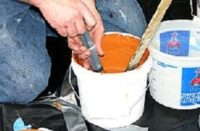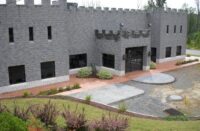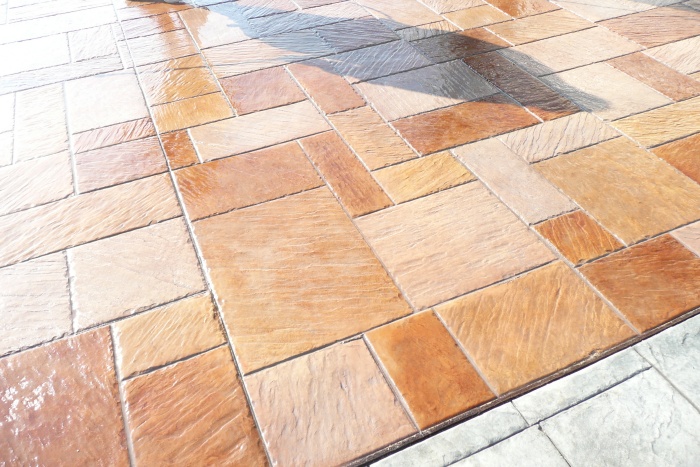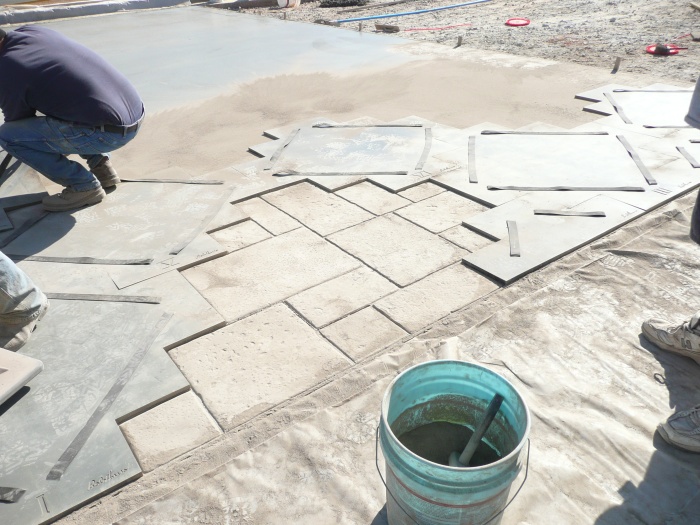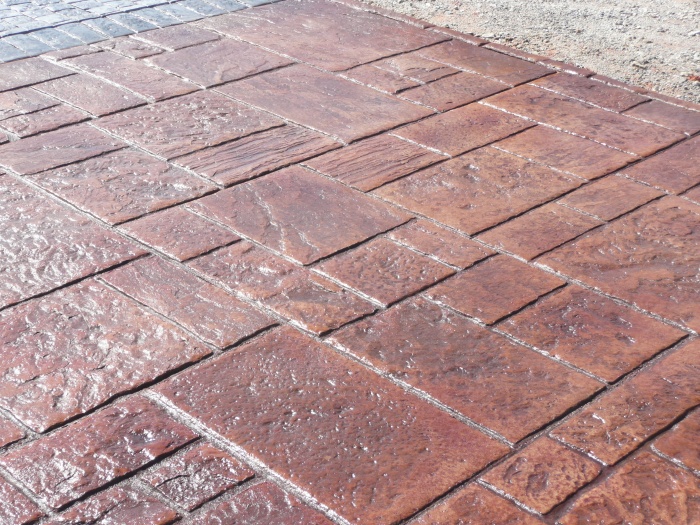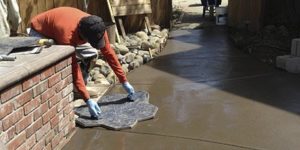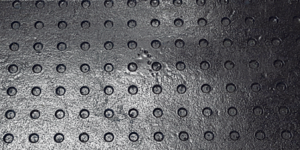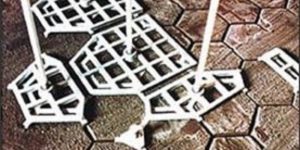There is something that could be said about the connection between wine and the invention of a great idea.
This certainly holds true for Bob Harris, president of the Decorative Concrete Institute. During a recent trip to Italy with his wife, Lee Ann, he was discussing the current stamped concrete market with three executives of Ideal Work over a bottle of Italian wine and what Harris says was unbelievable pasta.
“There had been no new creations for several decades relative to innovative tools,” Harris says. “During our relaxed evening it dawned on us — why not come up with our own inspirational line of stamping tools capturing the local feel of some of the most historical regions in the world?”
The end result was the Paladiano “Wonders of the World” stamping tool line, inspired by locations such as Paris, Athens, Barcelona, Yorkshire in England, and the Italian cities of Venice and Verona. Those cities are represented by the first six patterns that are being produced, which are expected to be available for sale this spring. The designs are patent-pending, and more are in development.
The stamping tools are cast with patterns taken from natural stones, which serve as models for authentic textures and shapes. In all, the team visited 28 cities to obtain copies of more than 450 textures from 33 different types of natural stone, including granite, limestone and marble. “We took the samples from local quarries, exterior plazas, walkways and interior floors,” Harris says. “We also studied how the stones were laid, which allowed us to replicate the architectural characteristics of each location. The result is a line of innovative stamping tools that is truly extraordinary.”
Bob Harris and John Anderson, Luca Seminati and Maurizio Pontello of Ideal Work are business partners in Paladiano LLC, which owns the rights to the stamps. Brickform, a division of Solomon Colors Inc., is the exclusive manufacturer of the Paladiano line, and will also take responsibility for training and joint marketing. “Overall, our exhaustive research and development work involved more than 45 people, more than 800 hours of experimentation, 650 hours of flight time, and the use of over 2,500 pounds of urethane and 40 cubic yards of concrete, the addition of many grey hairs and for some of us, the loss of hair,” Harris says.
During a brainstorming session to pick a name for the company, Harris opened up a book entitled “Floors of Venice.” He came across the term Paladiana in the glossary. The team liked the name, but they were unaware of its importance to architecture. As they would find out, it was inspired by the classic Palladian style of 15th-century Italian architect Andrea Palladio.
Although authenticity was the main goal in producing this line, the team also considered the practical and creative needs of those who would be using the tools. With many of the patterns, they have encouraged random-looking results by increasing the number of stamp tools per set. Handles were placed so that when the artisan lifts the tool from the fresh concrete, the edges of the stamp don’t bow and mar the surface. The team also reduced the need for hand tooling and simplified the creation of monolithic borders by designing sets of stamps that have top, bottom, and left and right halves.
Another unique feature of the stamps is their special urethane construction, which expands the time frame allowed for imprinting. They permit earlier stamping, and if the concrete sets too quickly and stamping begins on a firmer surface, they result in less fracturing of the joints.
Although the stamps aren’t available just yet, Brickform’s salespeople have reported a lot of interest and excitement. Each pattern will be available in a boxed set with as many as eight unique patterns per set, along with accessories and matching flexible tools. Having the appropriate amount of tools gives craftspeople a fair chance to stamp the area before the concrete sets, Harris says.
Harris adds that he and John Anderson were able to pull from their experience as professionals to create a valuable product. “Quite frankly we were sick and tired of how convoluted the market had become. There were too many failures from the wrong approach.”
